Gradient Structures
R&D, Implicit Modelling and Additive Manufacturing, 2025
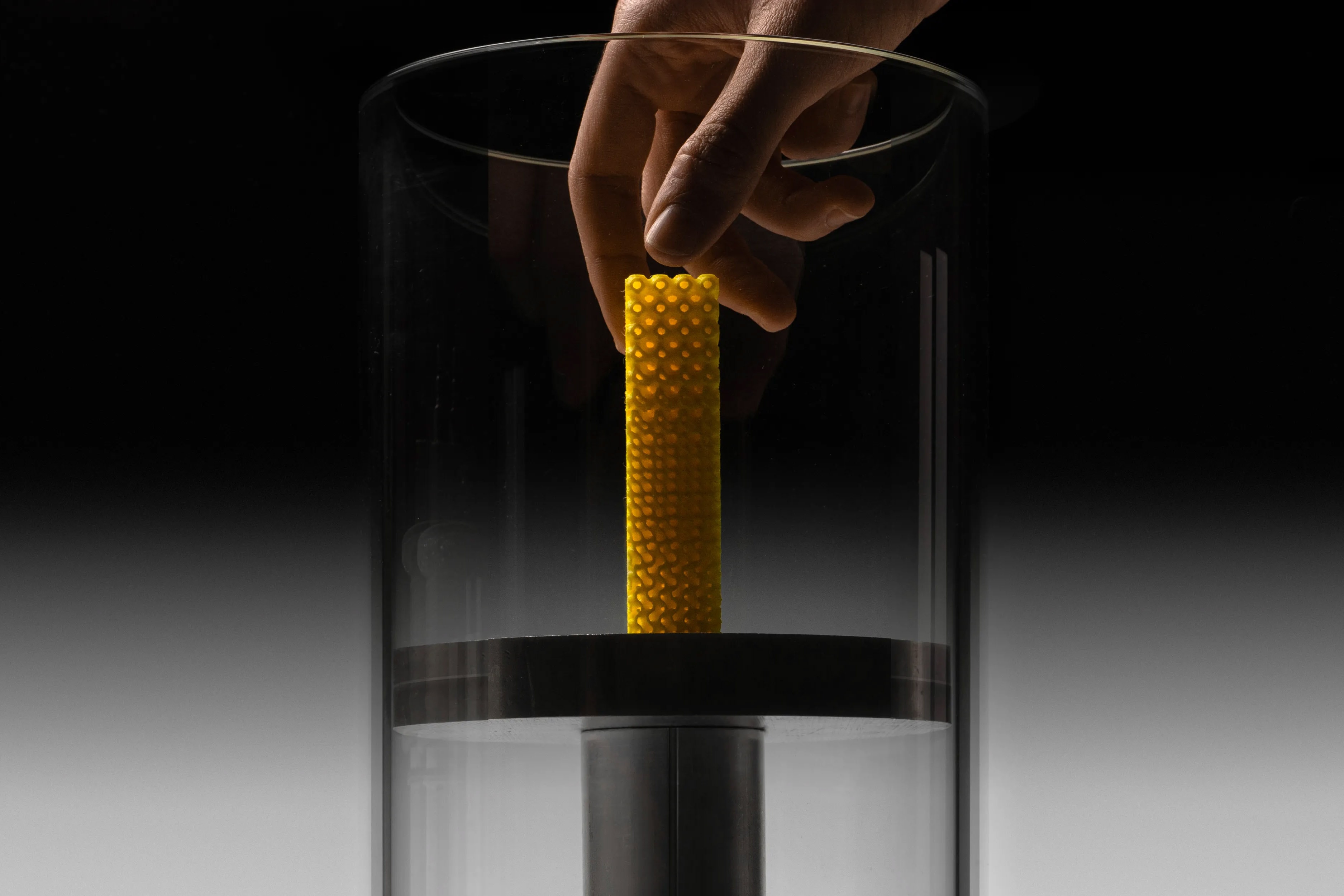
Shaping Things
For as long as people have been shaping tools and objects, they have been working at the meeting point of material and form. From the earliest flint axes to the towering steel structures of today, the success of any design depends on the material’s properties and how it is shaped to meet a purpose.
However, material properties alone don't define performance—geometry is key to unlocking new capabilities. Innovations like the H-beam, which enhances strength while minimizing weight, or kerfing, which allows rigid materials to bend with strategic cuts, demonstrate how shaping materials can transform their functionality.
Today, armed with simulations, databases, and advanced manufacturing tools, we can manipulate materials with extraordinary precision. Yet, even now, each new demand—a need for flexibility here, strength there—often means introducing a new material, bringing together an assembly of components.
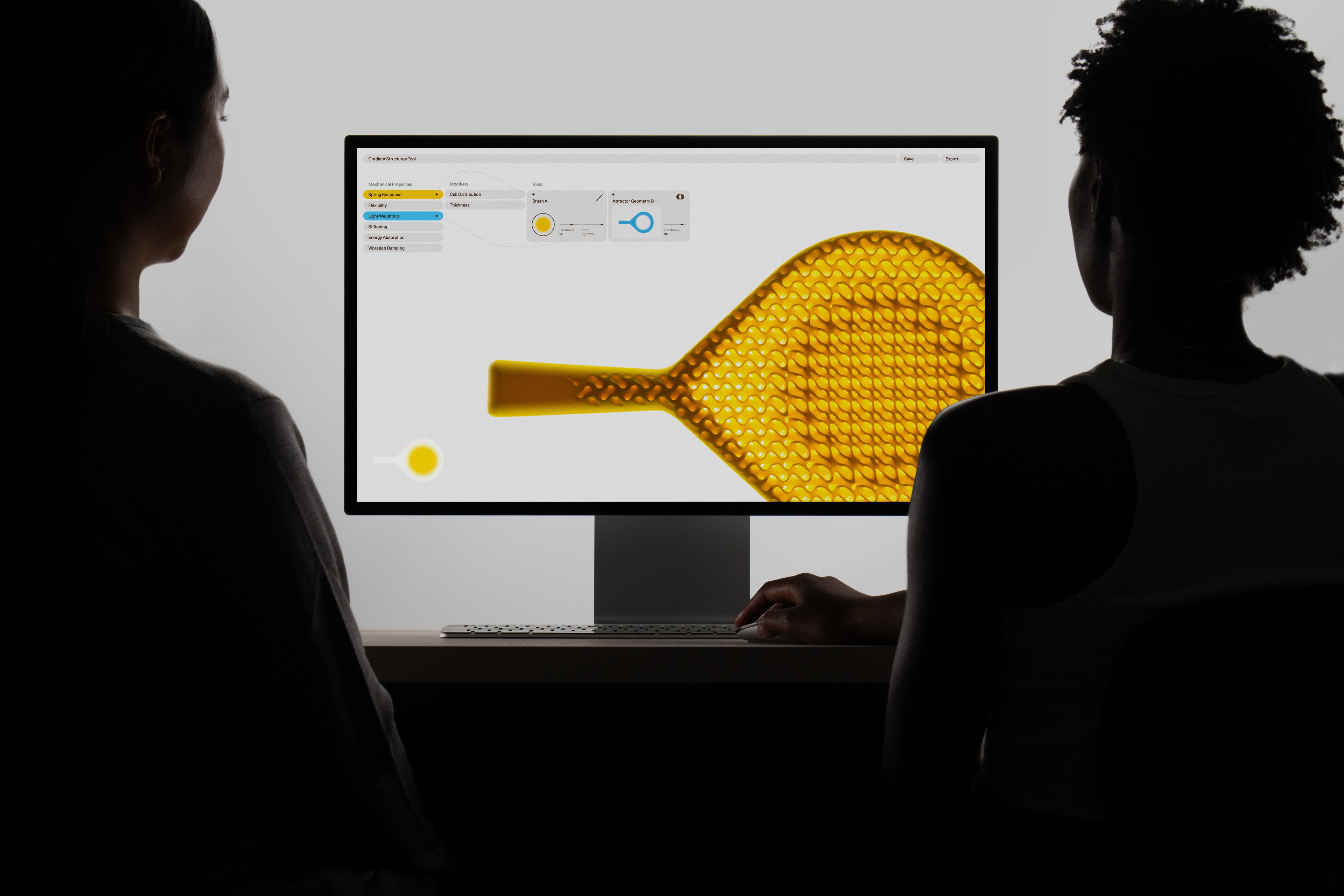
What if we could design a single material to meet multiple demands, not by changing what it is made of but by reimagining its structure?
Research Question
Lessons from nature
In search of answers, we do well to look at nature. Bones, for instance, are strong but light, their inner structure shaped by the stresses they bear. A honeycomb achieves astonishing strength with minimal weight, while the porous structure of a plant’s stem helps it transport water efficiently.
These natural designs work not only because of what they are made of, but because of how they are structured. They show us that geometry itself can serve as a tool, tailoring the behaviour of a material to meet specific needs.
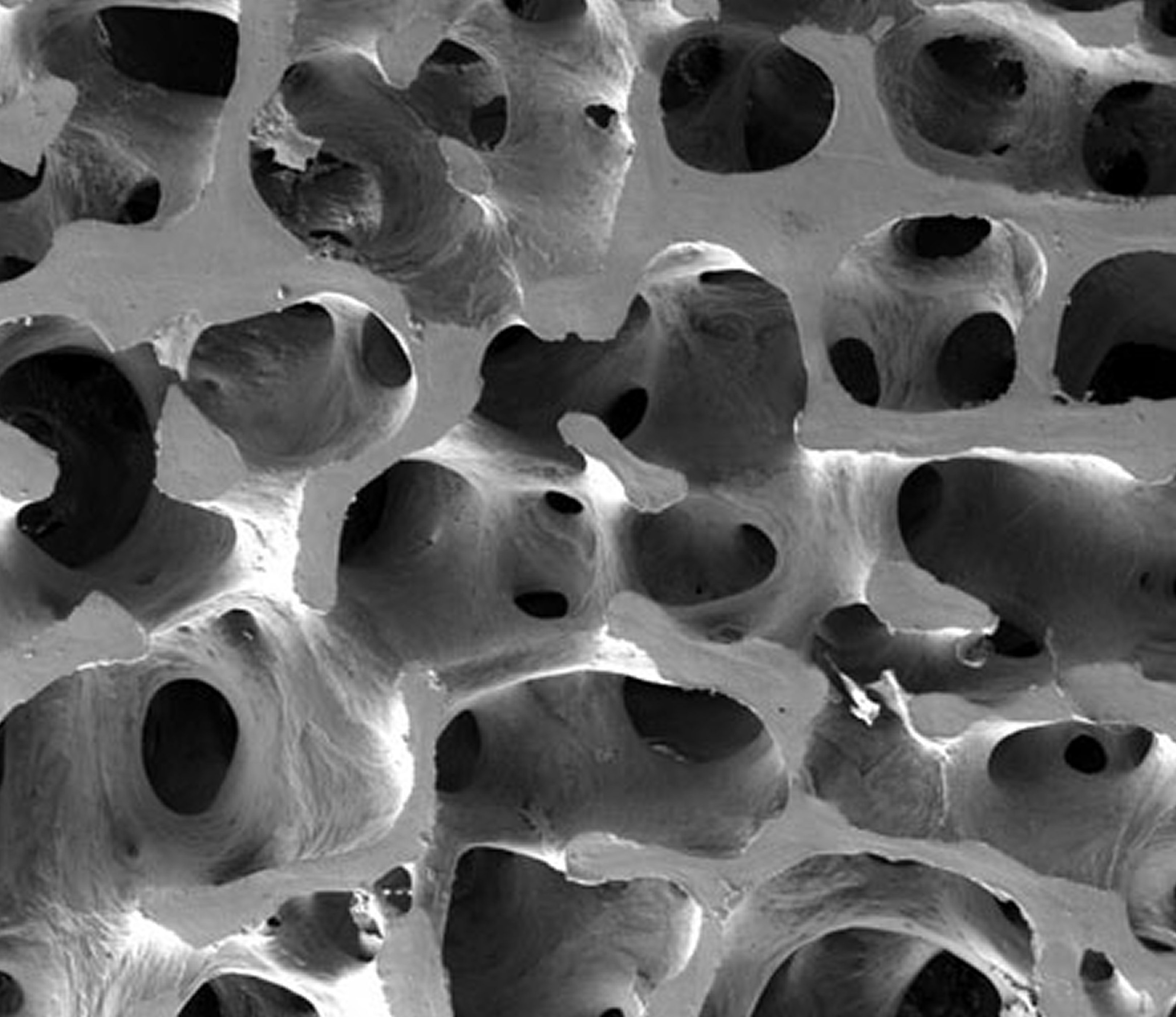
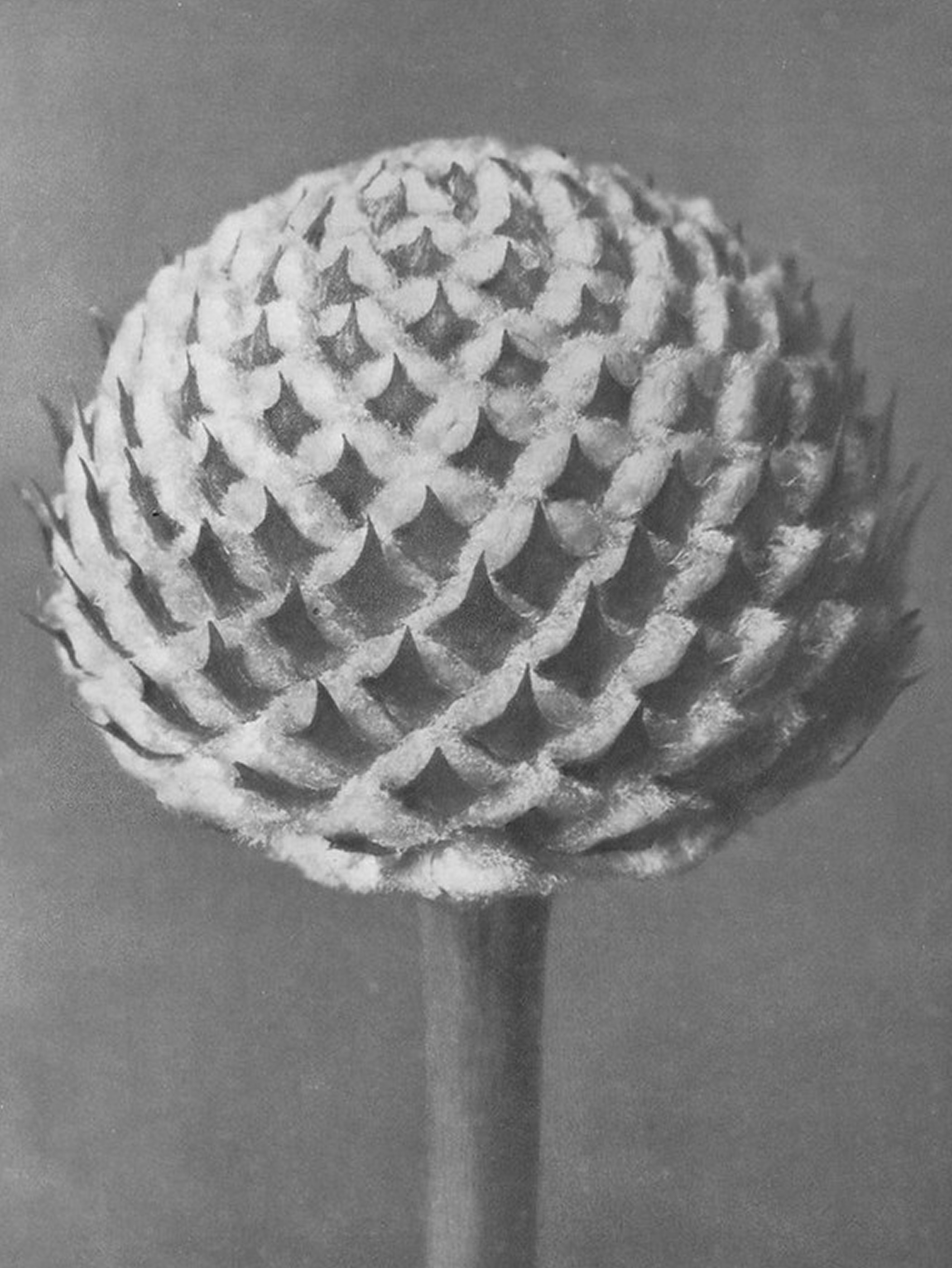
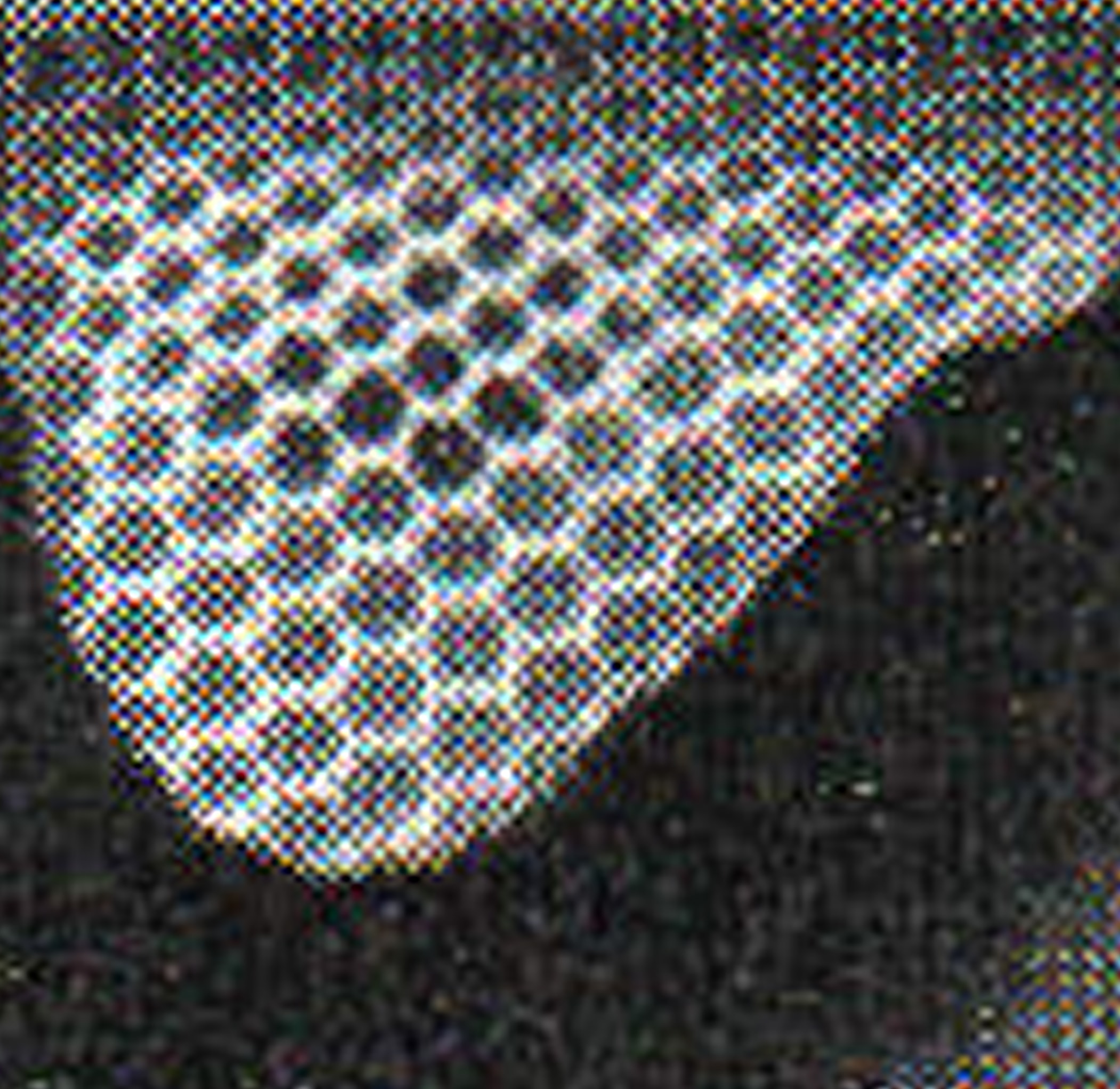
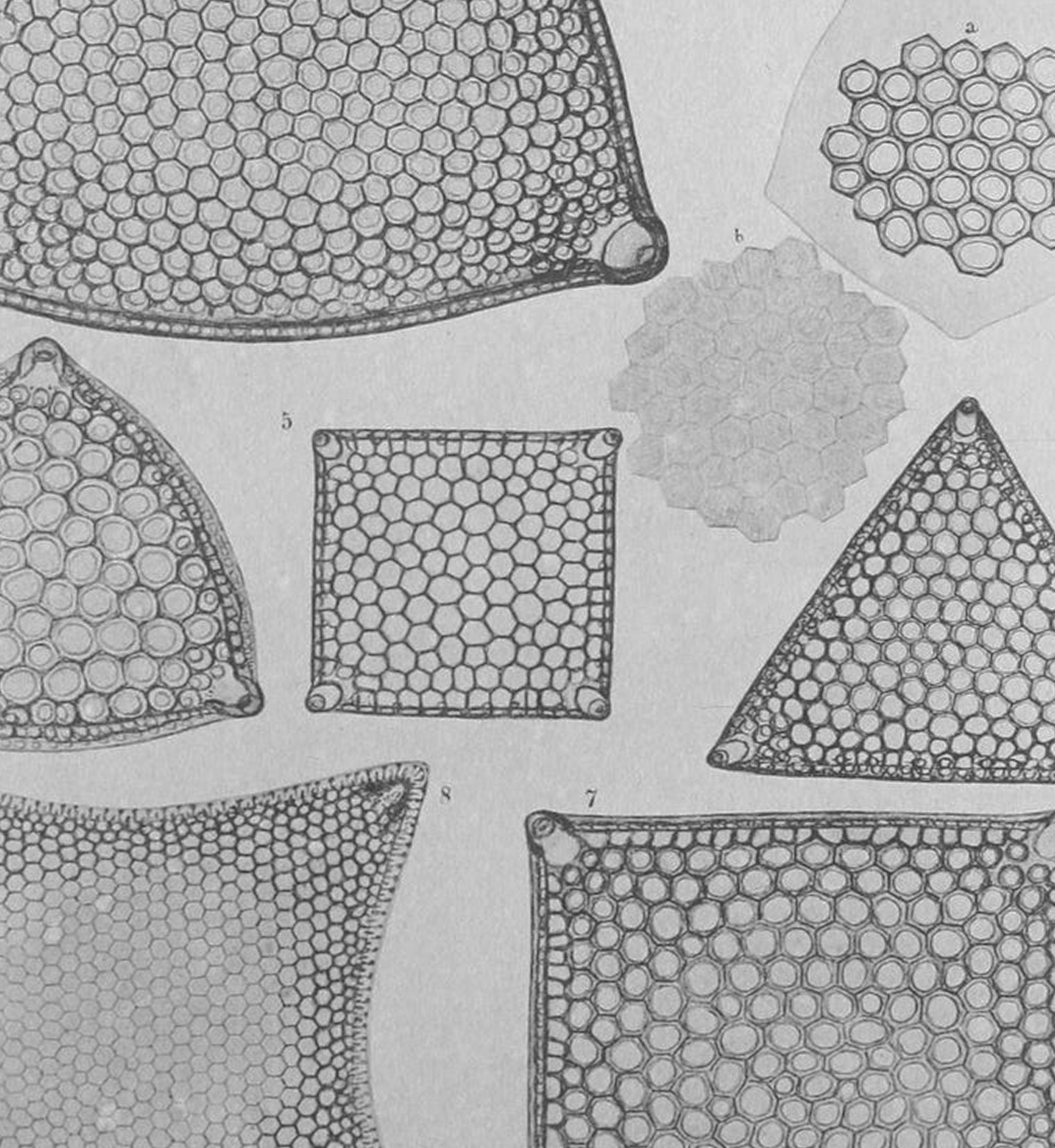
Embracing the implicit
To design architected materials, a new approach to geometry is needed—one that goes beyond surfaces and edges. Traditional design methods focus on the visible shell, describing shapes in terms of boundaries. This is called boundary representation, or B-rep.
Nature’s structures are rarely defined by their external surfaces. A bone or a honeycomb is not just an outer shape but a system of forces and flows. To capture this complexity, designers are turning to implicit modelling, a method that defines shapes through mathematical function, F-rep—perhaps one of the truest examples of form follows function.
Imagine a sphere. In the traditional approach, you would specify its radius and centre, drawing its outer surface. In implicit modelling, the sphere is described as a field—a continuous gradient of values that tell you whether a point in space is inside, outside, or on the edge.
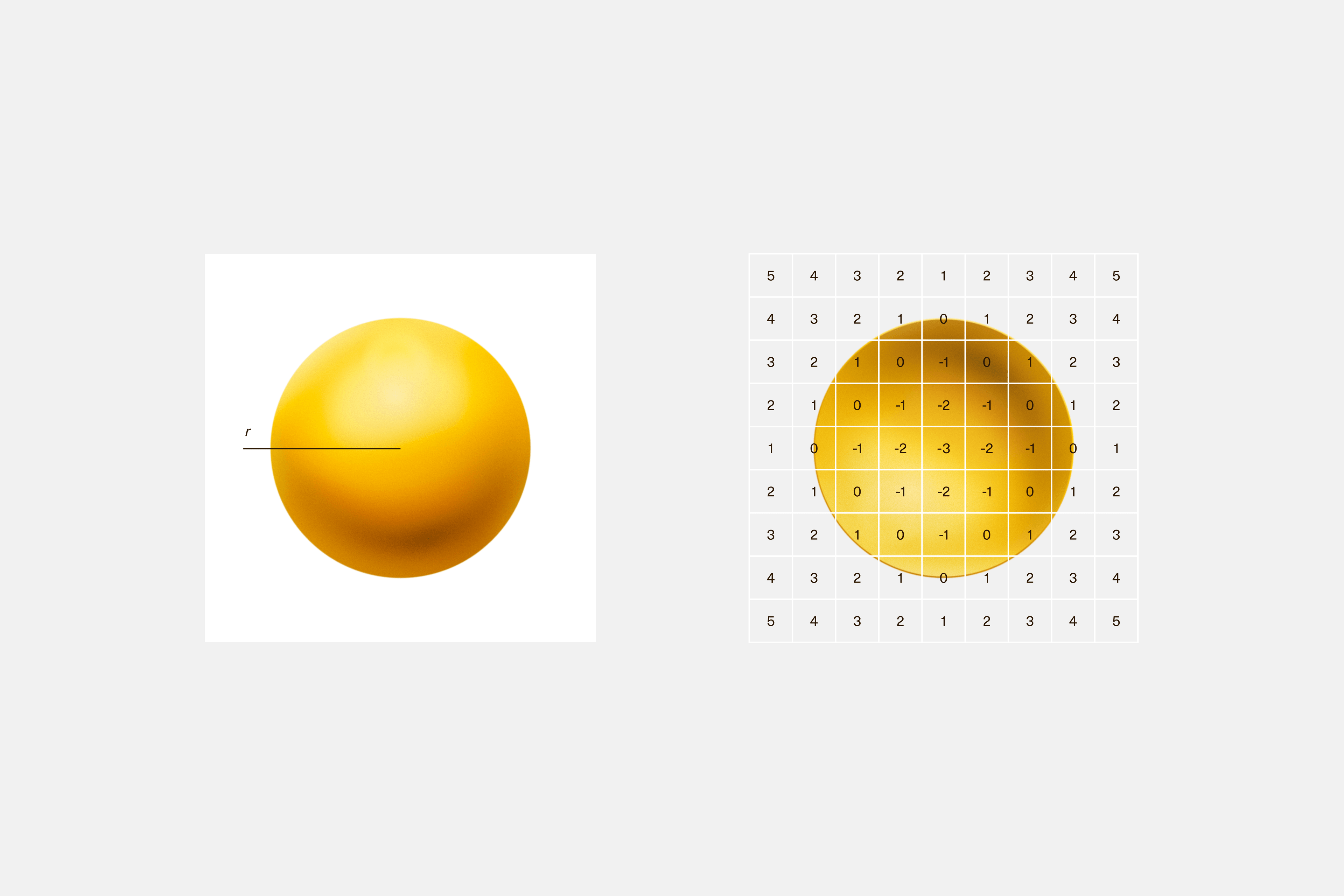
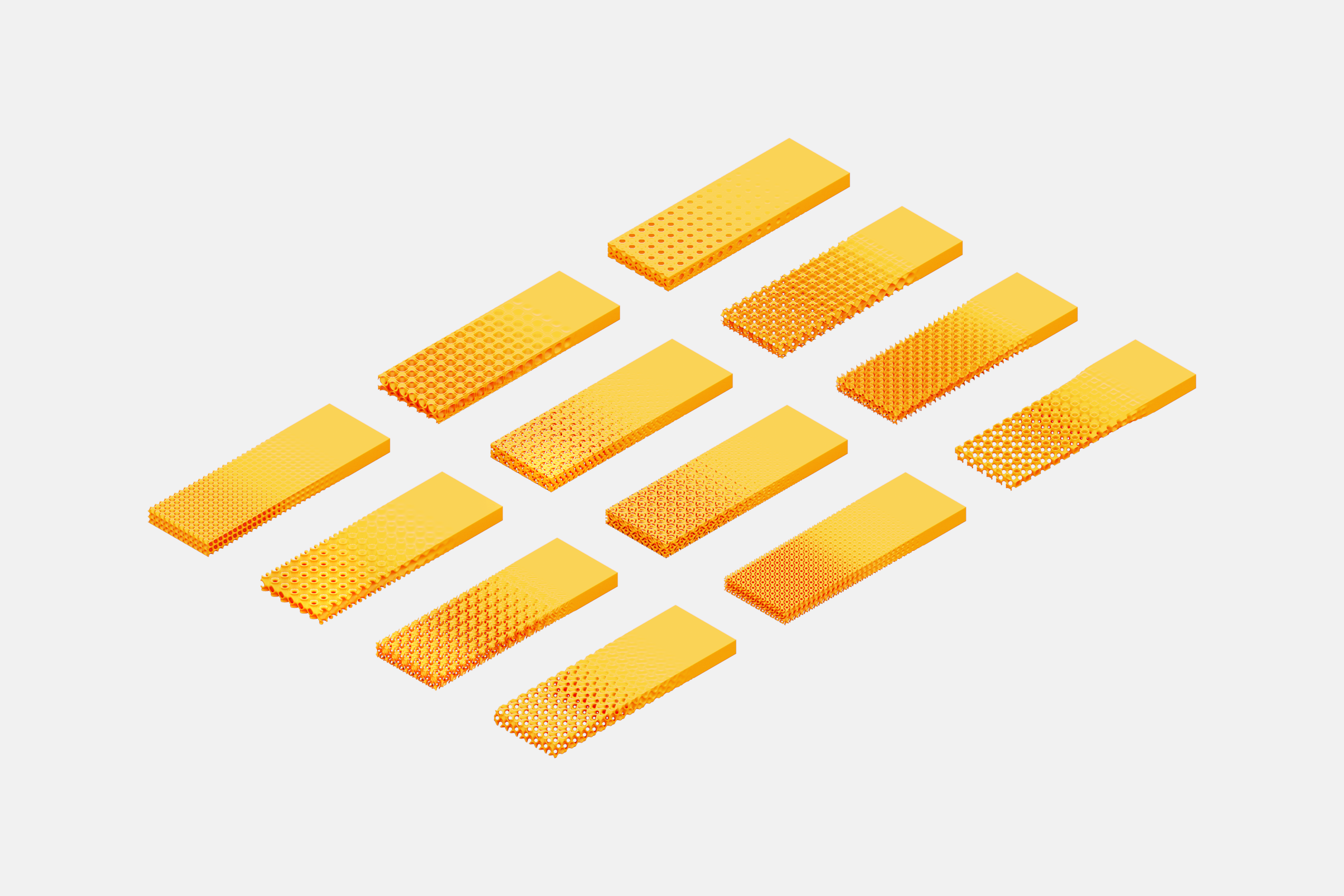
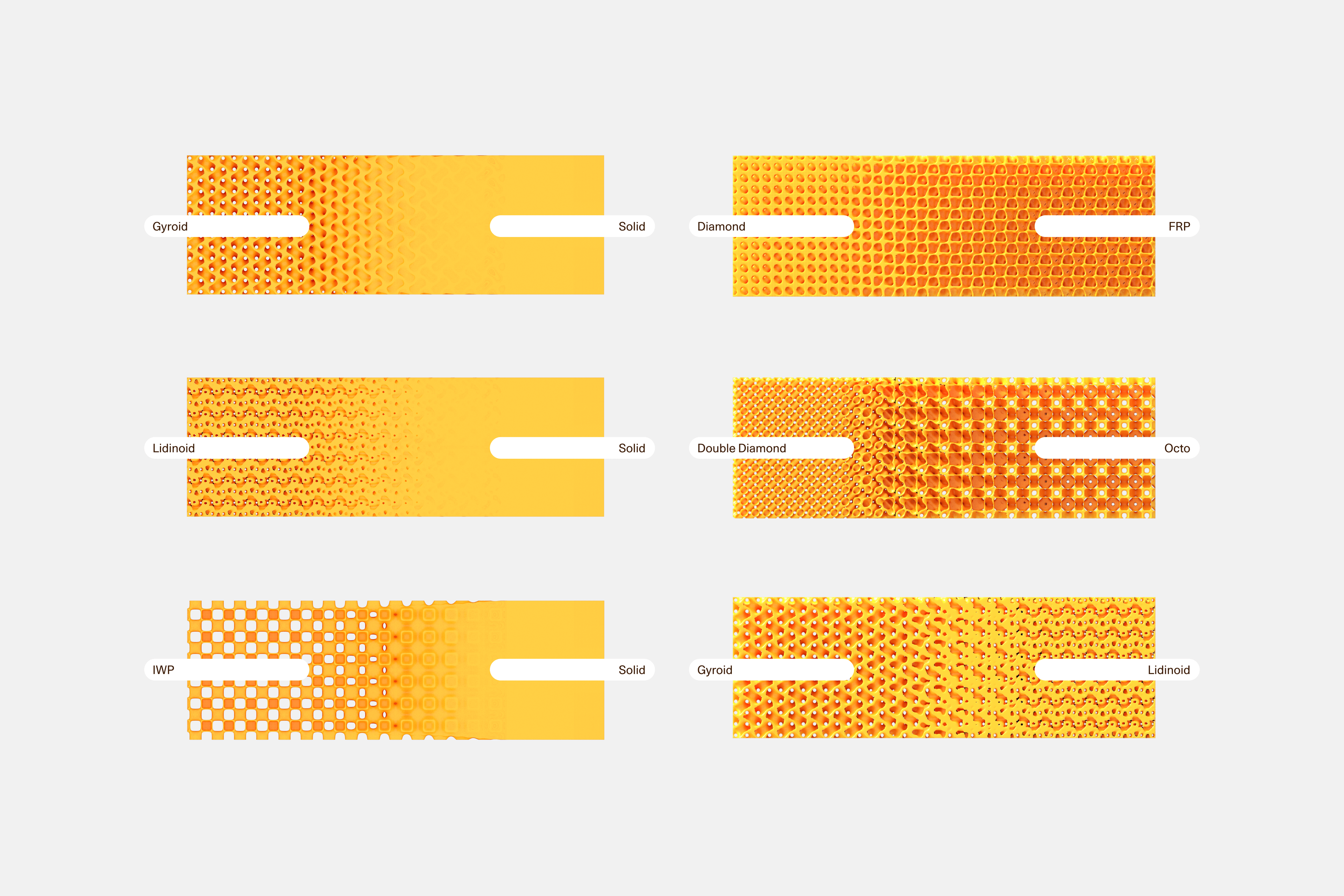
Though subtle, this change opens things up. With implicit modeling, you can blend one shape into another seamlessly, creating smooth transitions between intricate geometries, or adapting the density of a structure to the forces it will encounter.
The method also has practical advantages: it is computationally efficient, less prone to error, and capable of handling great complexity with ease.
Working with implicit modeling invites a different way of thinking. Rather than starting by sketching a shape, you instead define the rules and gradients that will give rise to shapes. At first, it feels strange. You are designing something nebulous—a field rather than a form.
This approach allows us to design mono-materials objects that can shift properties within their boundaries. A single object can transition from stiff to flexible, dense to porous, without breaking or dividing into separate components.
Implicit Modeling
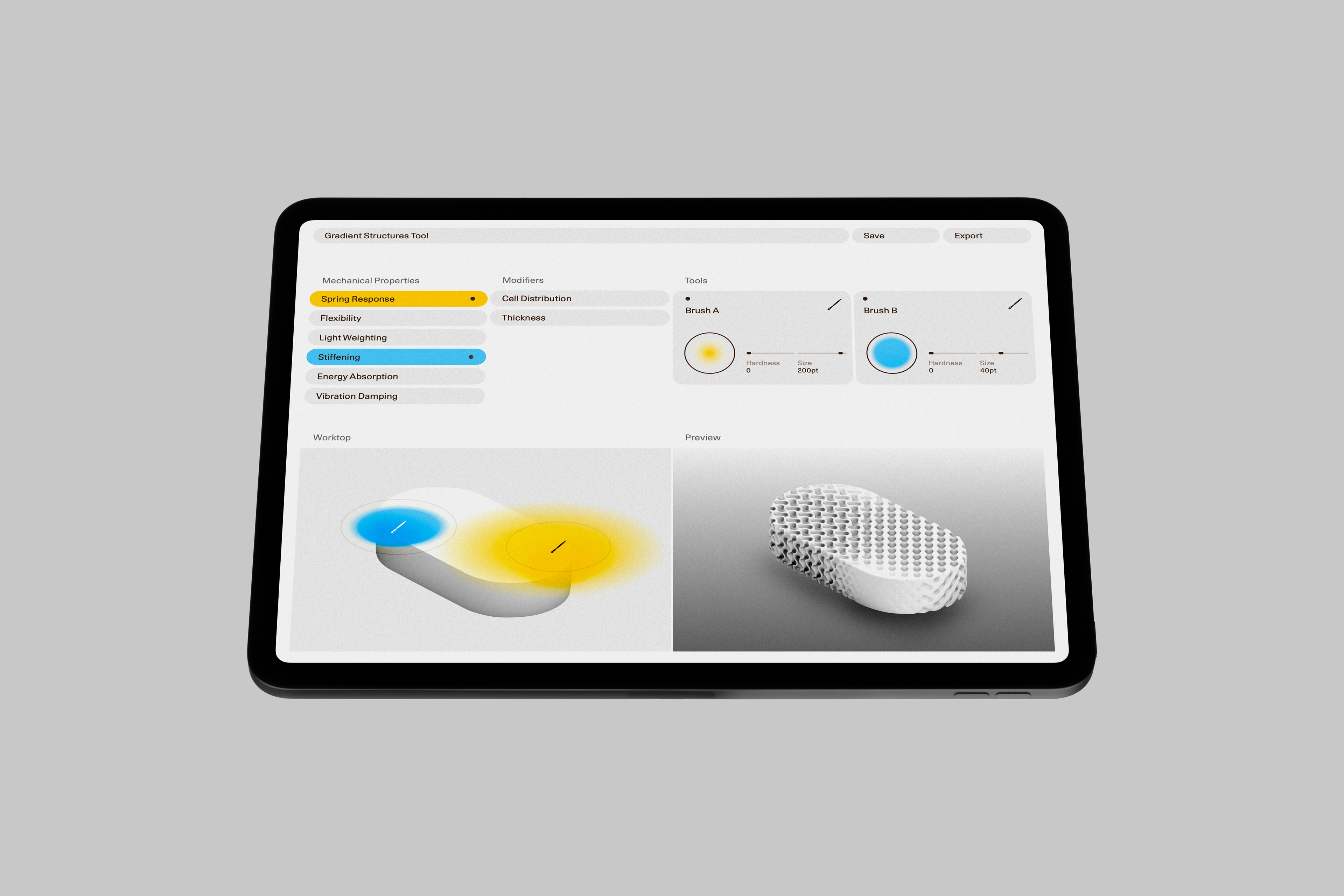
Tools that make it easier for designers to integrate and blend lattice structures in their designs.
Additive Manufacturing
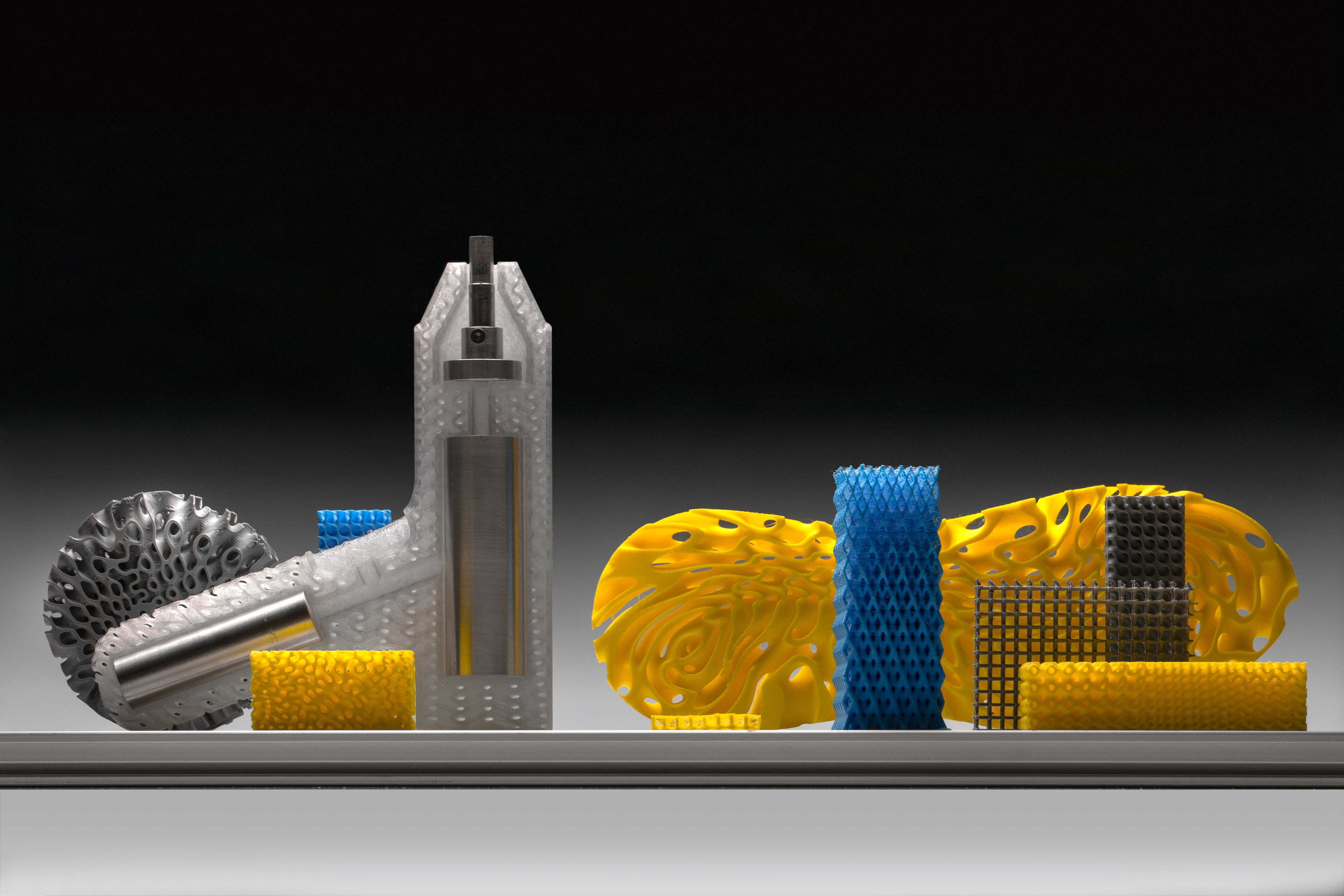
3D printing tools that reliably reproduce intricate geometries
Tools and experiments
We then asked ourselves: how can we control where to apply what property within the object volume? What if we could brush on flexibility? Or overlay a pressure map and make our object adapt its stiffness along the pressure areas? What would be a granular way to control these properties—something that would enable industrial use cases?
Excited by the potential of this approach, we conceptualised a set of tools to enable different types of designers to play with architected materials. From intuitive brushes for the less technically inclined, to intercepting attractions for creatives in the engineering space, and data uploads for performance-driven profiles, looking to play around with new technology.
In our concept, a user might integrate a property by picking a type of structure and using one of the different modes to apply it more intuitively. Unexpected details may emerge in the blending areas, as new 2D patterns or entirely new types of structures. By starting to explore these tools and their various effects, it becomes possible to create a new world of intriguing transitions and shapes
For our experiments, we used a tool called Axolotl, integrated into the Grasshopper environment for Rhino. It allowed us to explore the potential of implicit modelling as a way to shape materials at their core.
Watch the behind the scenes
00:00
00:00
01
Gradient Brush
This mode is suited to experimentation, proof-of-concepts, rapid assumption testing, and iterative design of mostly-flat objects. The brush can be used to apply lattices along a single plane, for the entire depth of an object. This tool could also be used on more three-dimensional objects if one defines parameters for how deep into the object the lattices should go.
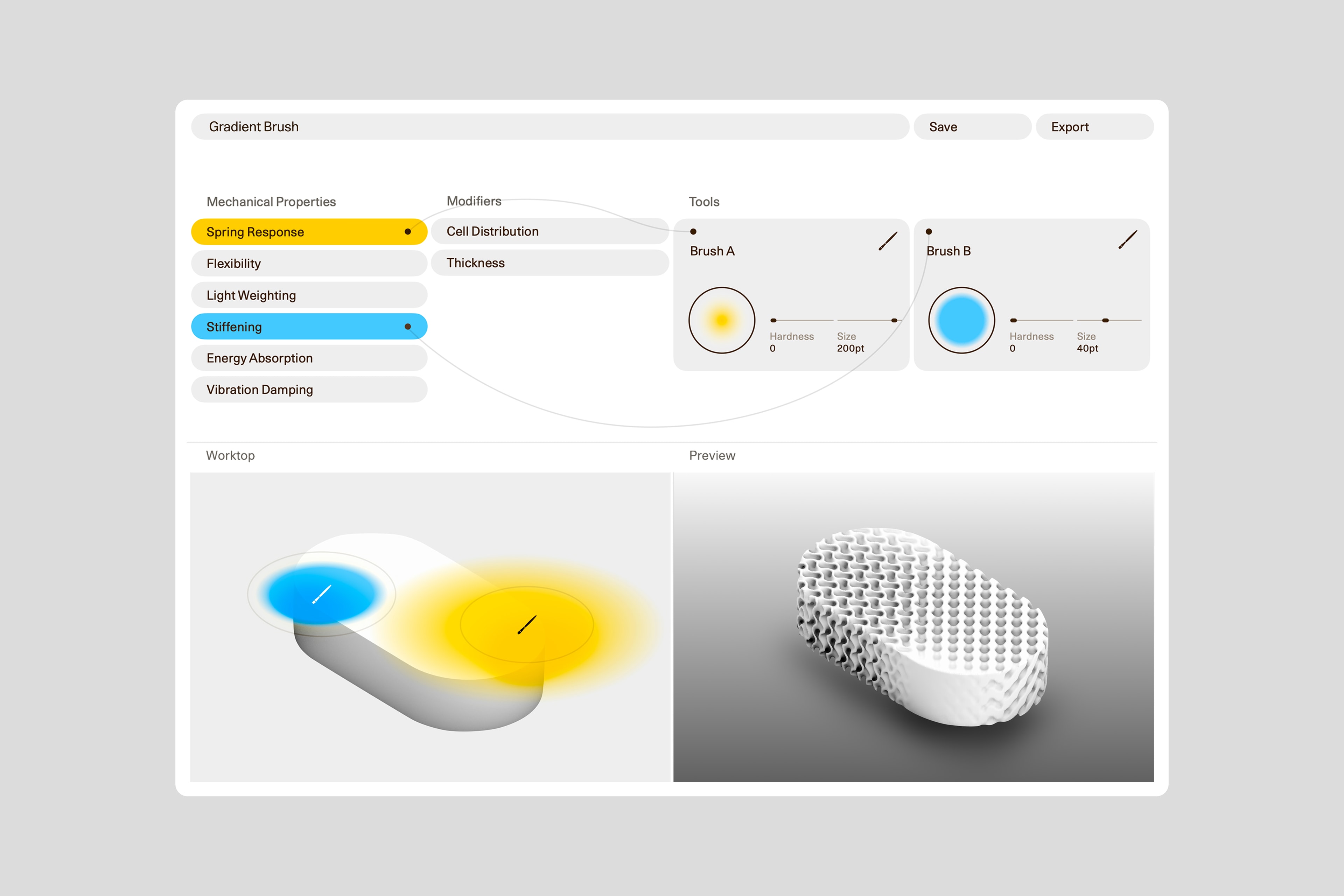
02
Attractor Bodies
Conceived for three-dimensional objects, this method allows you to define specific geometries and assign properties to them. The geometries function as attractors and can be placed within the objects to alter their properties. We have created two types of attractor bodies that can be intersected: clouds or magnets.
Clouds influence geometries with greater strength at their core: their influence happens within the boundaries of the attractor, the closer to the attractor boundary, the less influential they become.
Magnets influence geometries both within the limits of their boundaries and beyond them.
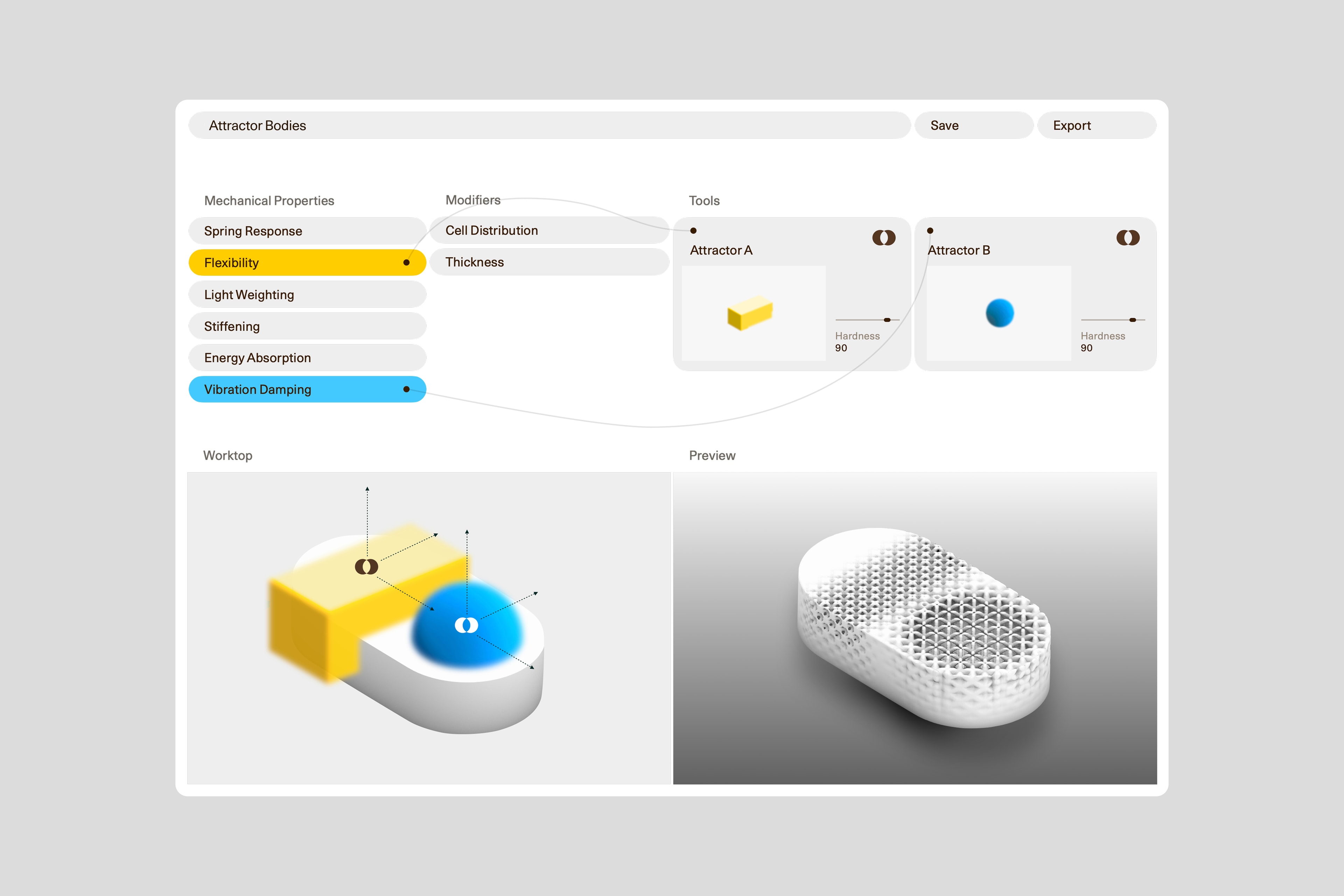
03
Data Upload
This approach works best for performance-orientated components. By uploading datasets like pressure maps or heat maps, one can generate bespoke geometries tailored to specific functional requirements.
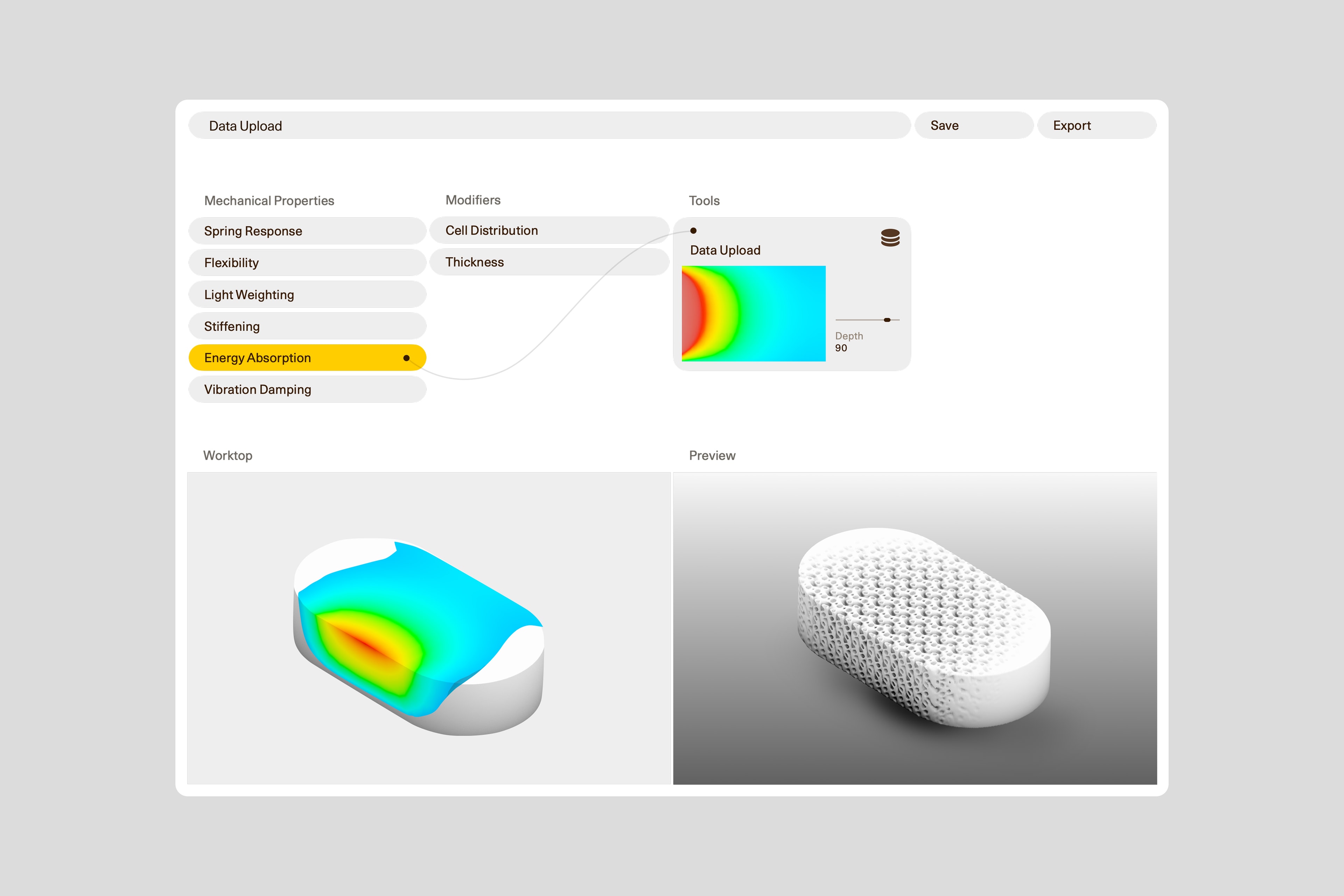
04
Refining with Modifiers
Modifiers are a set of add-ons designed to augment the efficacy of the input tools previously described. Their purpose is to refine existing structures, whether by altering the spatial arrangement of their constituent cells or by adjusting the dimensions of their thickness.
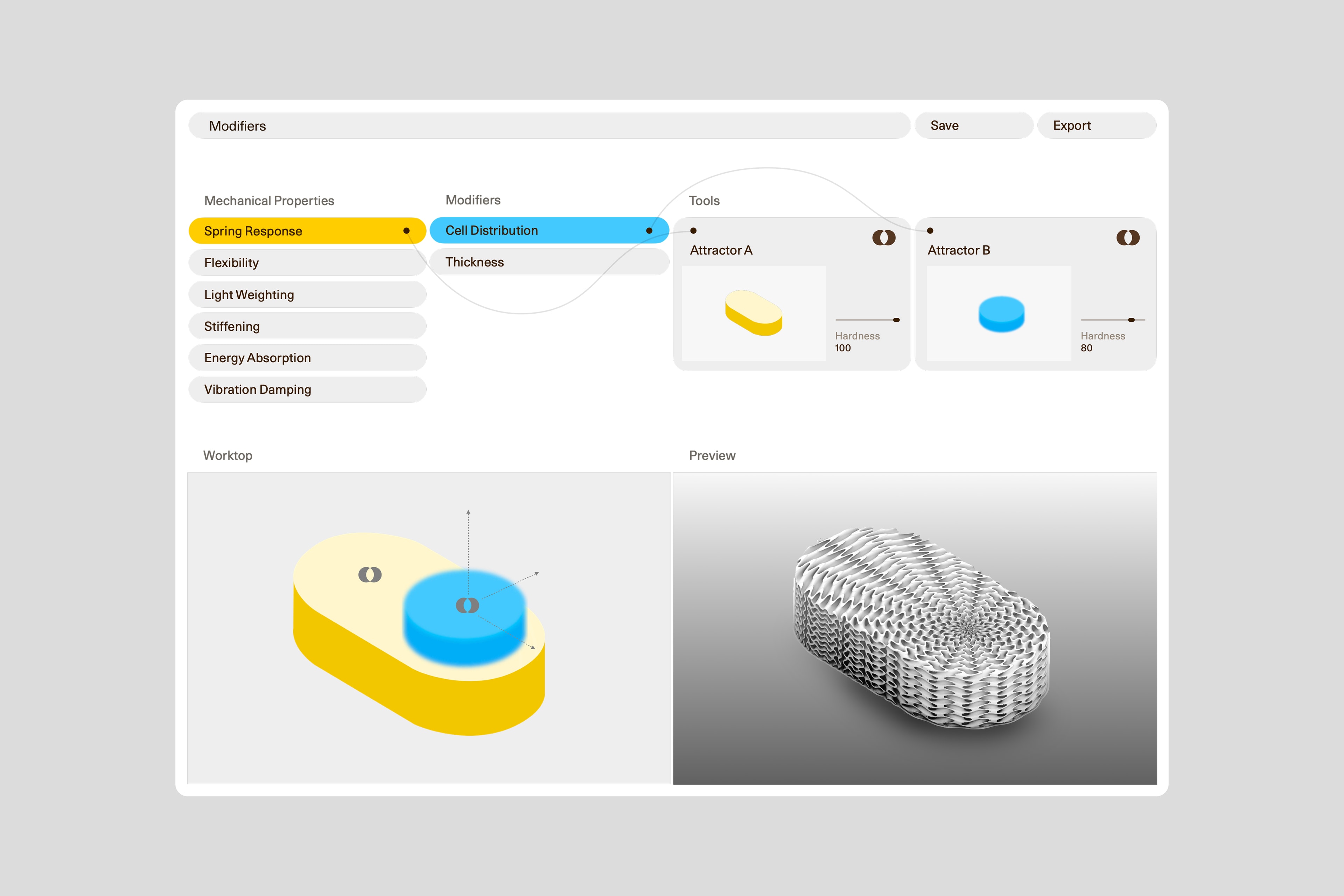
With these tools at hand we wanted to explore how they could help us design the things we use every day. How might we make the materials we wear more comfortable? Or combine higher performance properties with intricate designs? As hands-on makers, we were itching to put our research to practice, and ultimately selected four hard-working everyday objects to re-create.
Gradient structures in the real world.
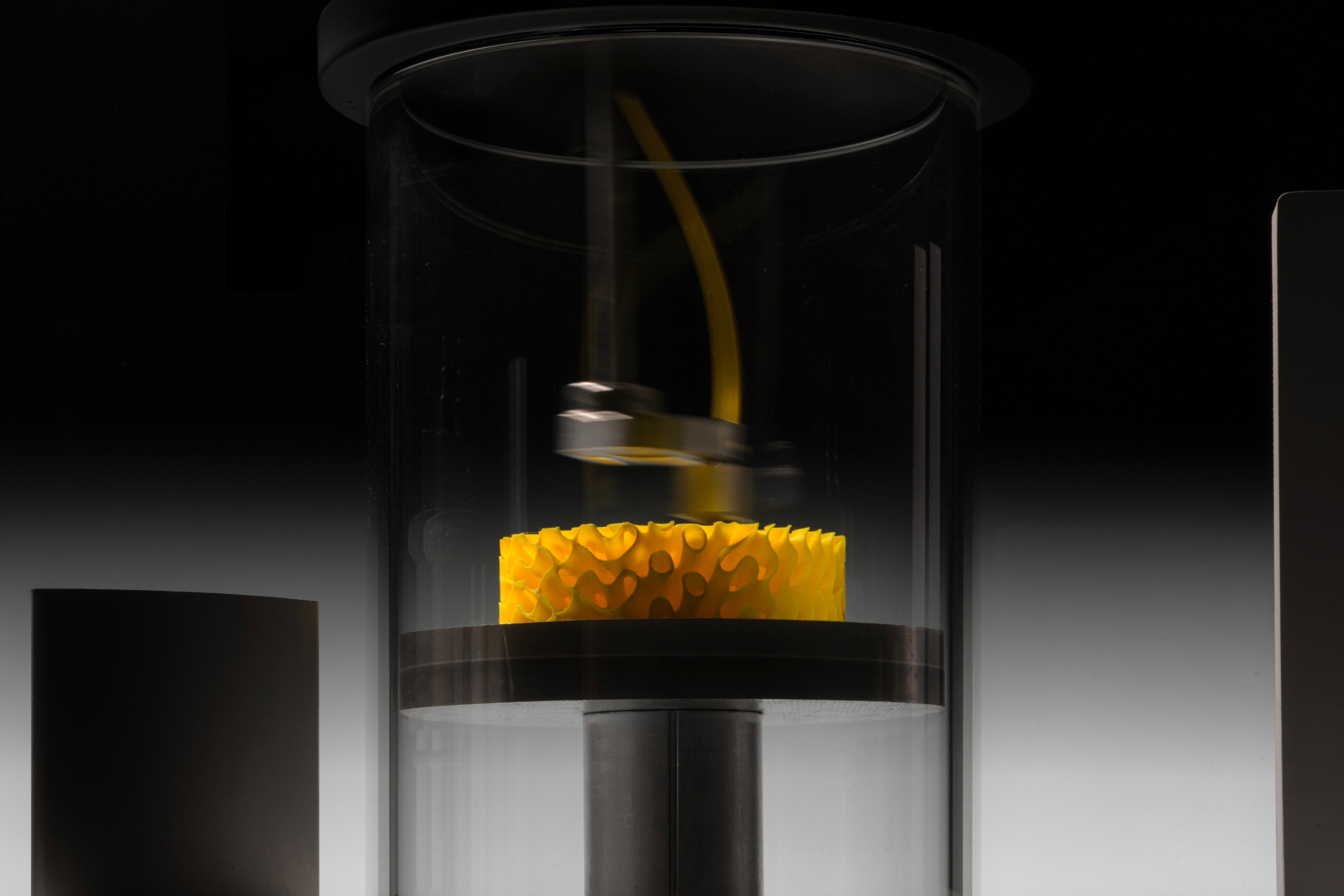
More customised comfort
A shoe midsole must cushion the heel, support the arch, and return energy to the forefoot. With architected materials, these zones can be designed into a single structure, each region shaped to its task. A pressure map of the wearer’s foot guides the design, ensuring comfort and performance.
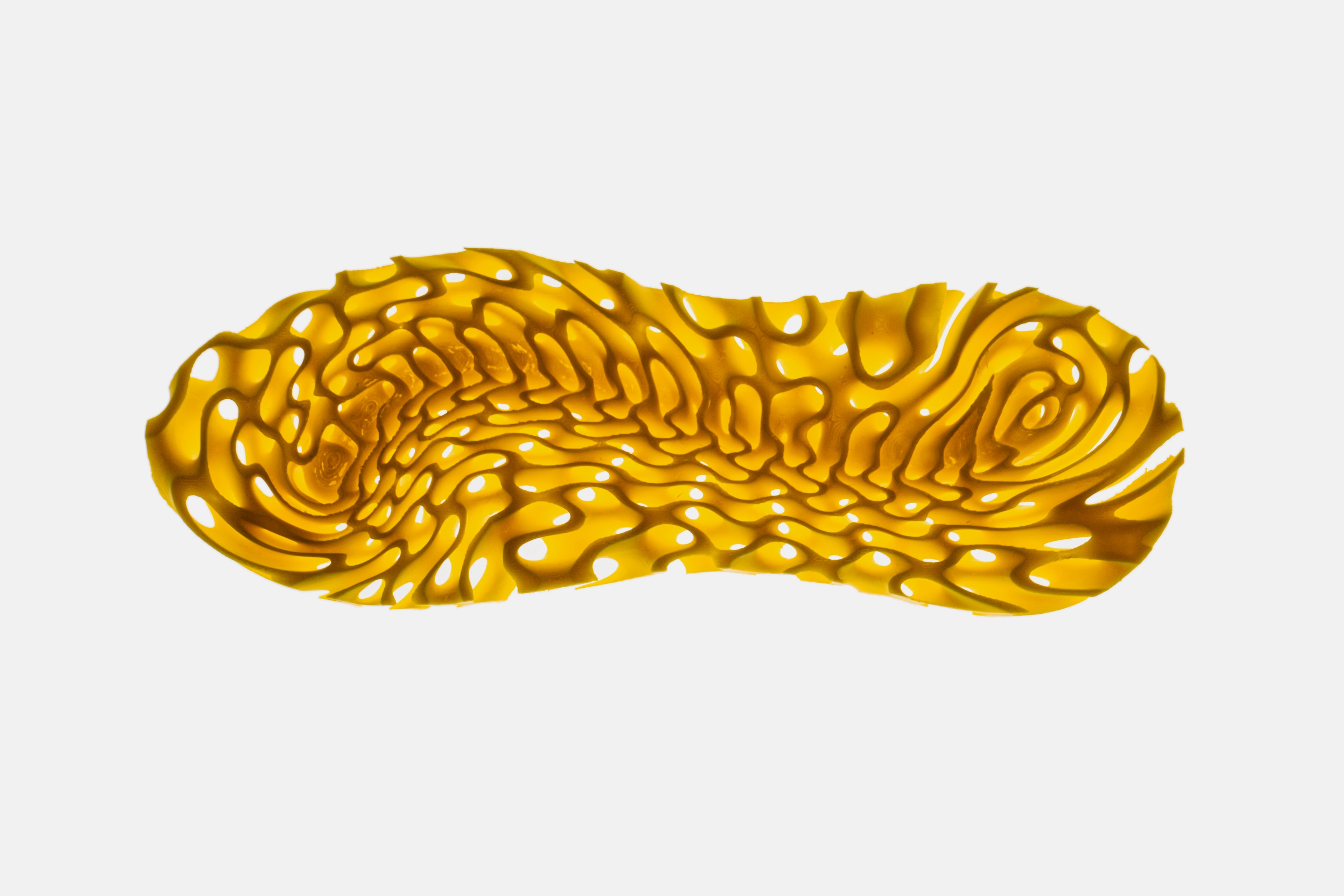
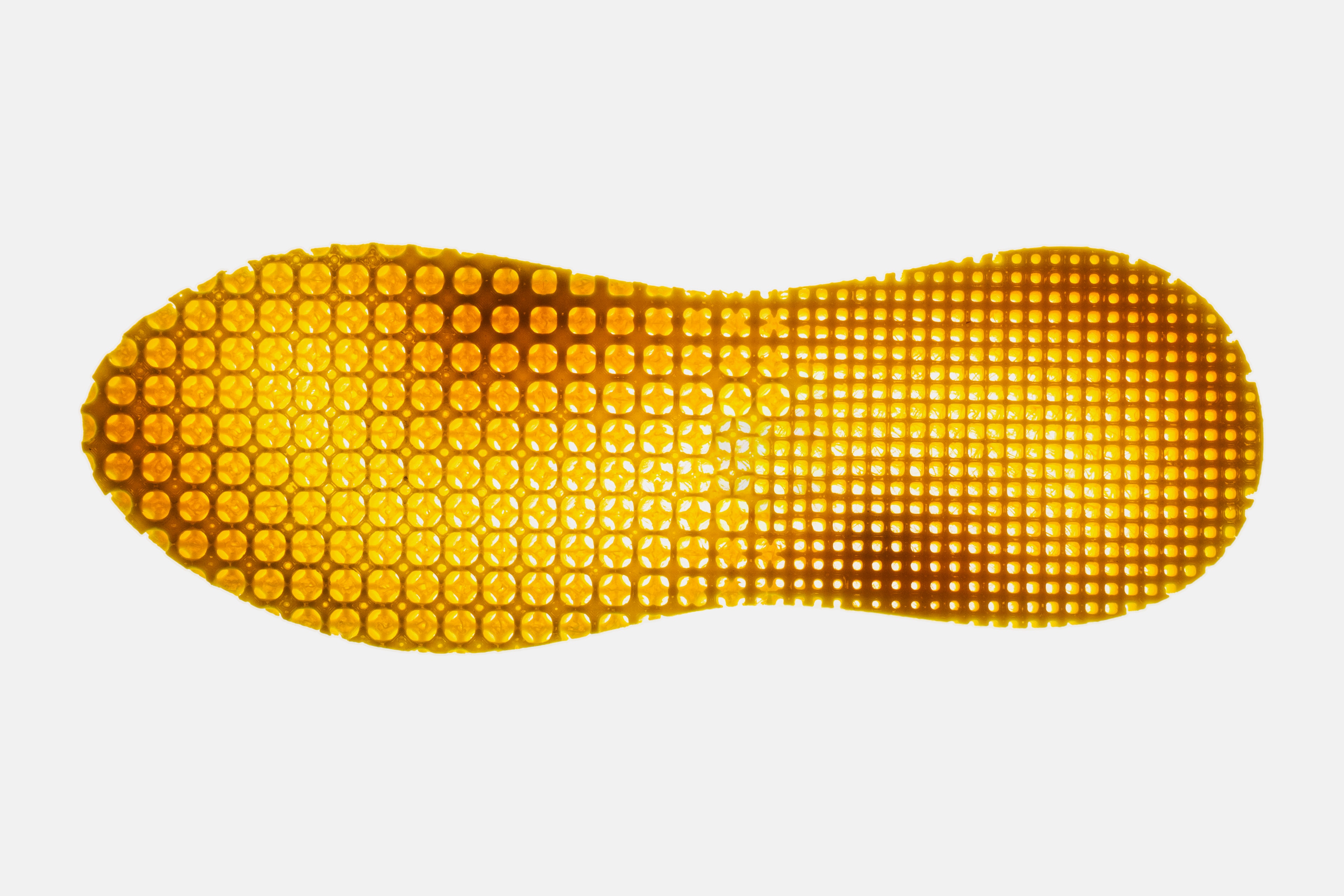
Gradient brush applied to a shoe sole for springiness, breathability, and support zones.
Cooler electronics
An unsung hero of home appliances and computers, heatsinks benefit from materials with high surface areas. Architected materials, such as triply periodic minimal surfaces, branch outward from temperature sensitive components, dispersing heat efficiently.
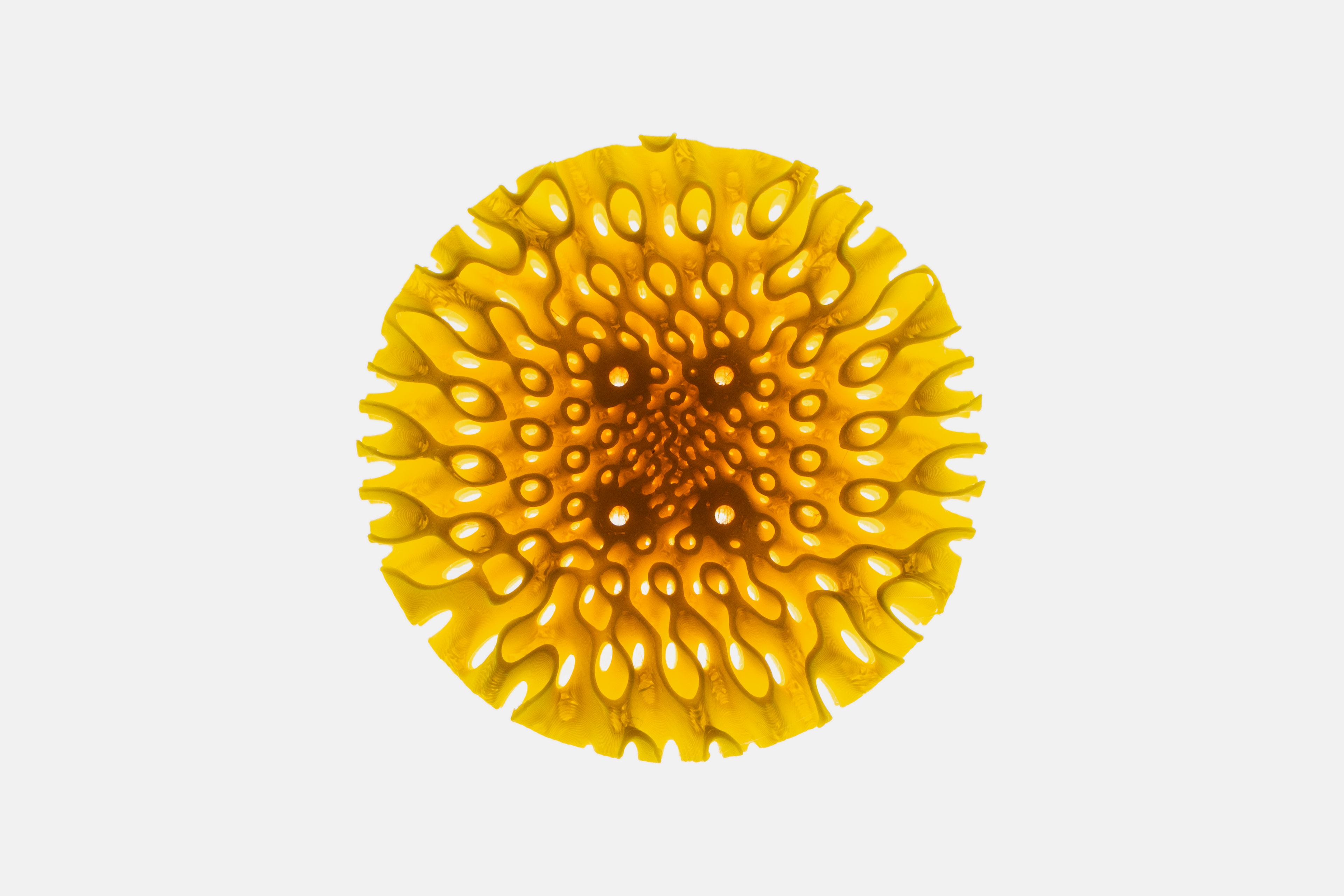
Steadier grip
Hand-held tools such as drills often produce vibrations that make extended use uncomfortable. By introducing intricate geometries into their handles, these vibrations can be absorbed, making the tools easier to hold for longer periods without requiring springs or additional insulating materials.
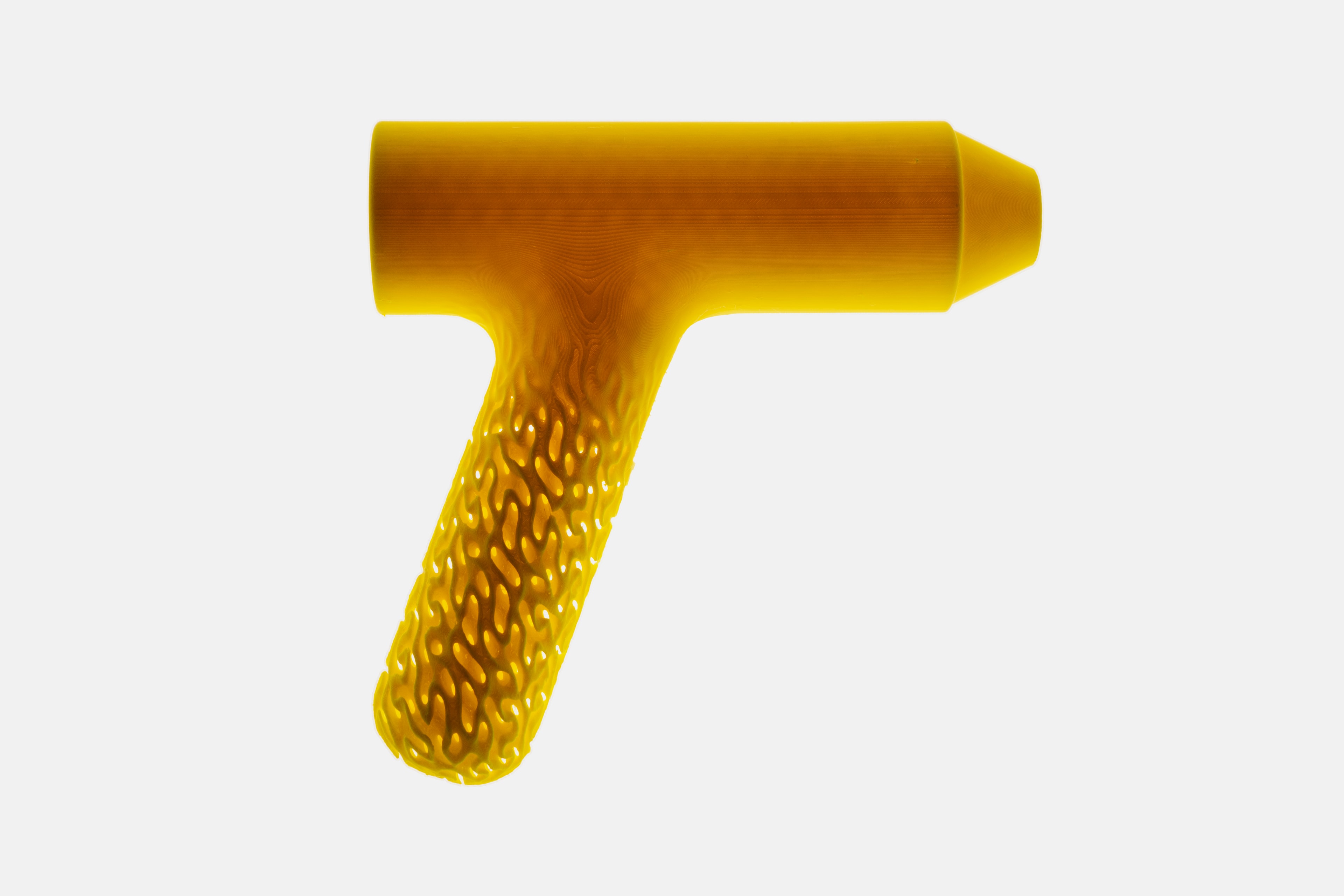
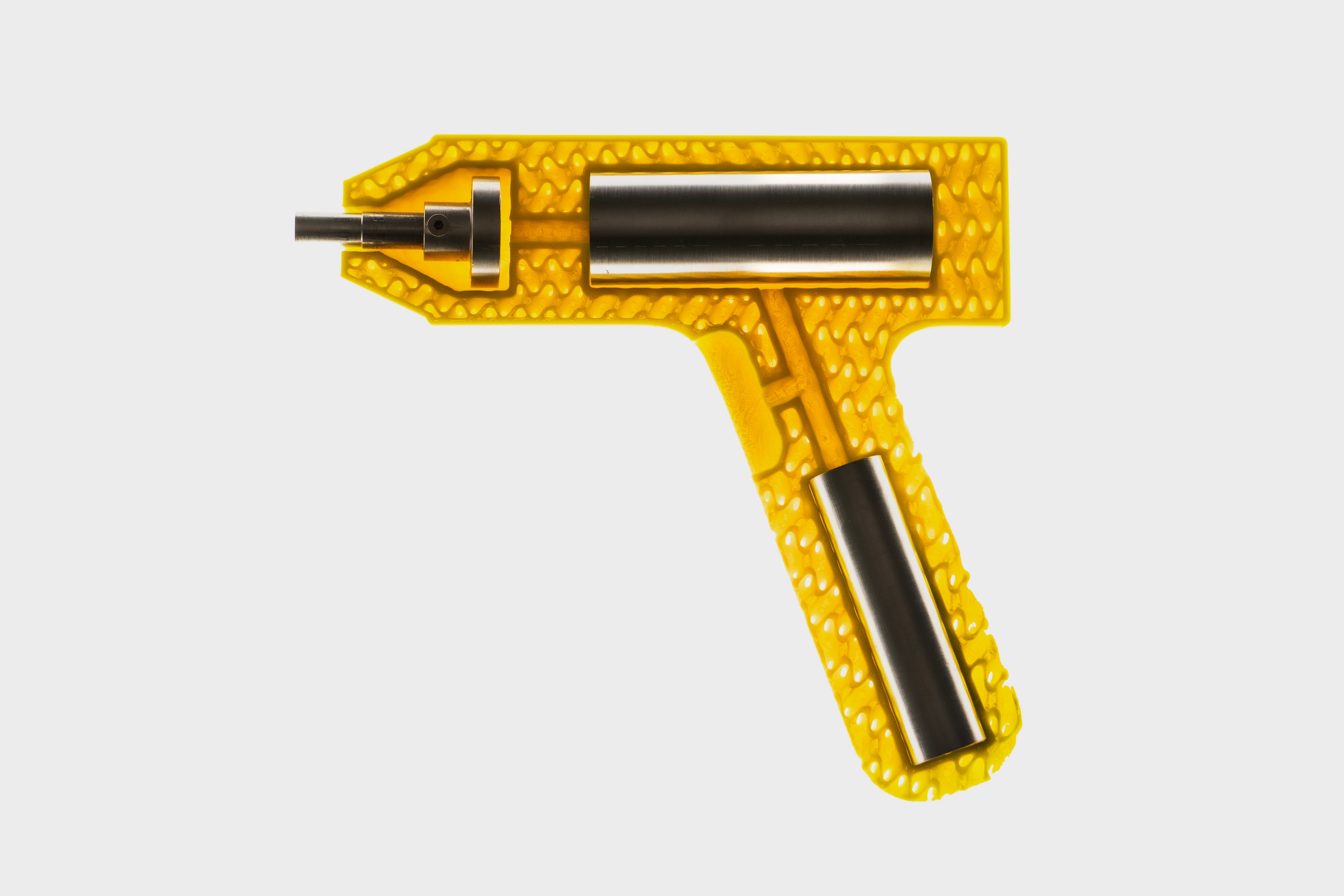
Vibration damping lattice structures.
Lighter play
As well as applying vibration-damping zones in the grip, architecting the materials on the surface and frame of a sports racket can give your ball more bounce, while reducing the overall weight.
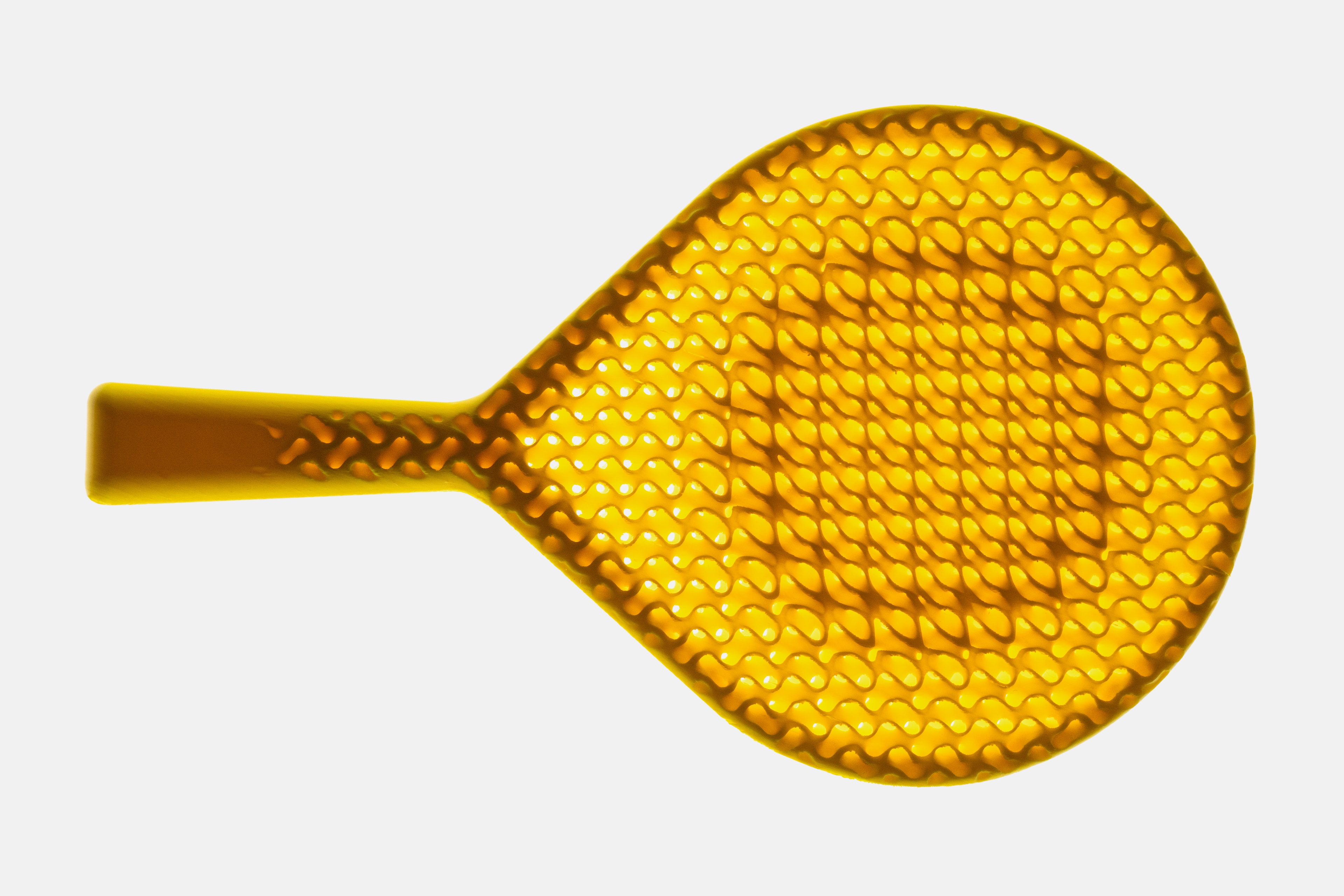
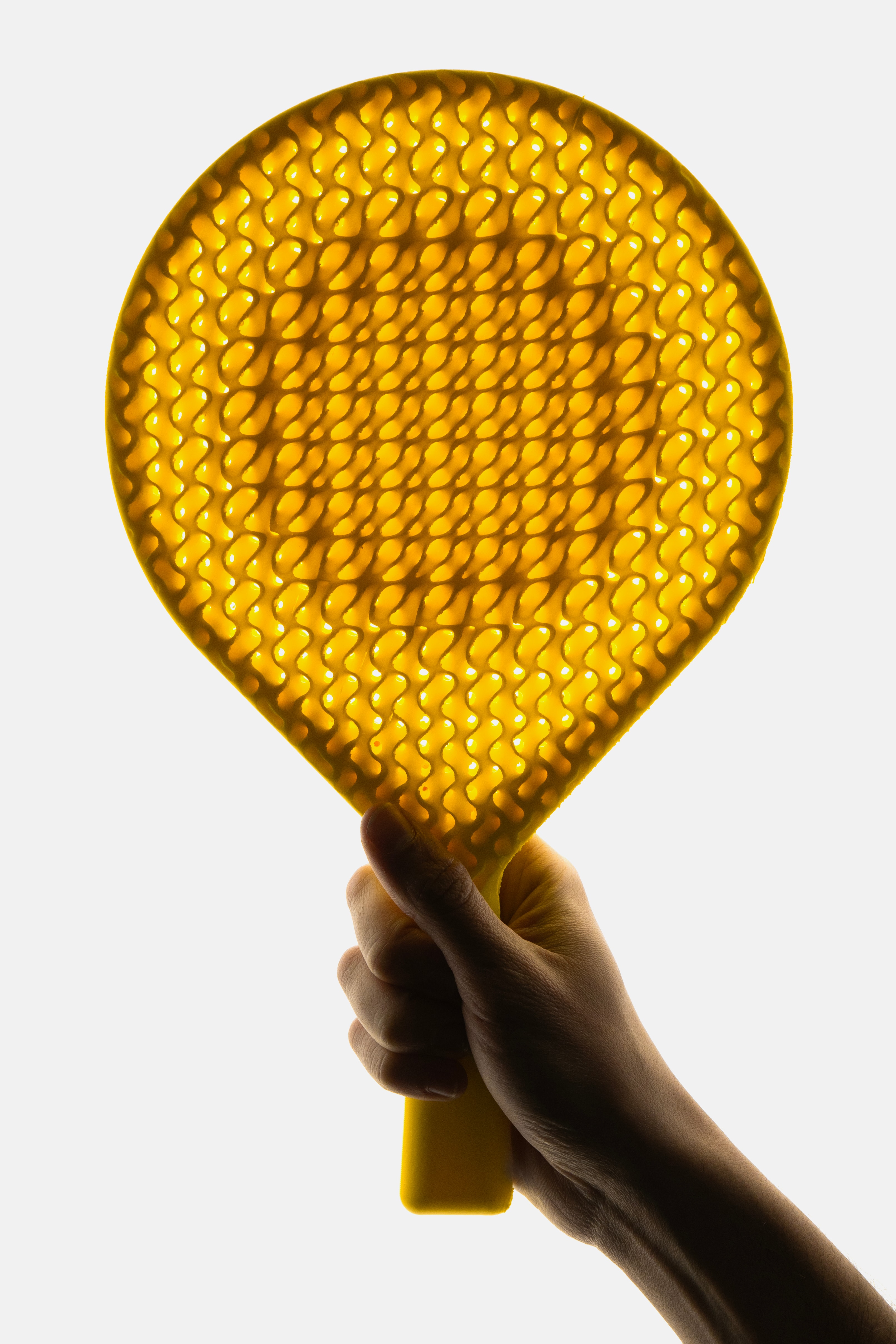
Mono-material racket, resorting to a gradient of structures to achieve springiness, stiffness and light-weighting in a single print.
Looking ahead
Imagine designing objects where their mechanical strength and elasticity can be tuned like musical notes, where acoustic patterns can sculpt muffling anatomies, or thermal properties can be embedded within otherworldly lattices.
Gradient structures allow objects to fundamentally transcend the limitations of their materials. Where once we had to layer different single-attribute materials, we are now able to design mono-material items that embody multiple attributes through structure alone. And, in reducing the amount of materials and material we use to create our everyday objects, we can start to reimagine them within circular product pipelines that automate their assembly and disassembly.
Our first explorations showed one way it could work and what it could yield. But to truly realise this way of designing, we need tools, processes and metaphors that enable the new generation of designers and engineers to also innovate beyond the limitations of their current materials.
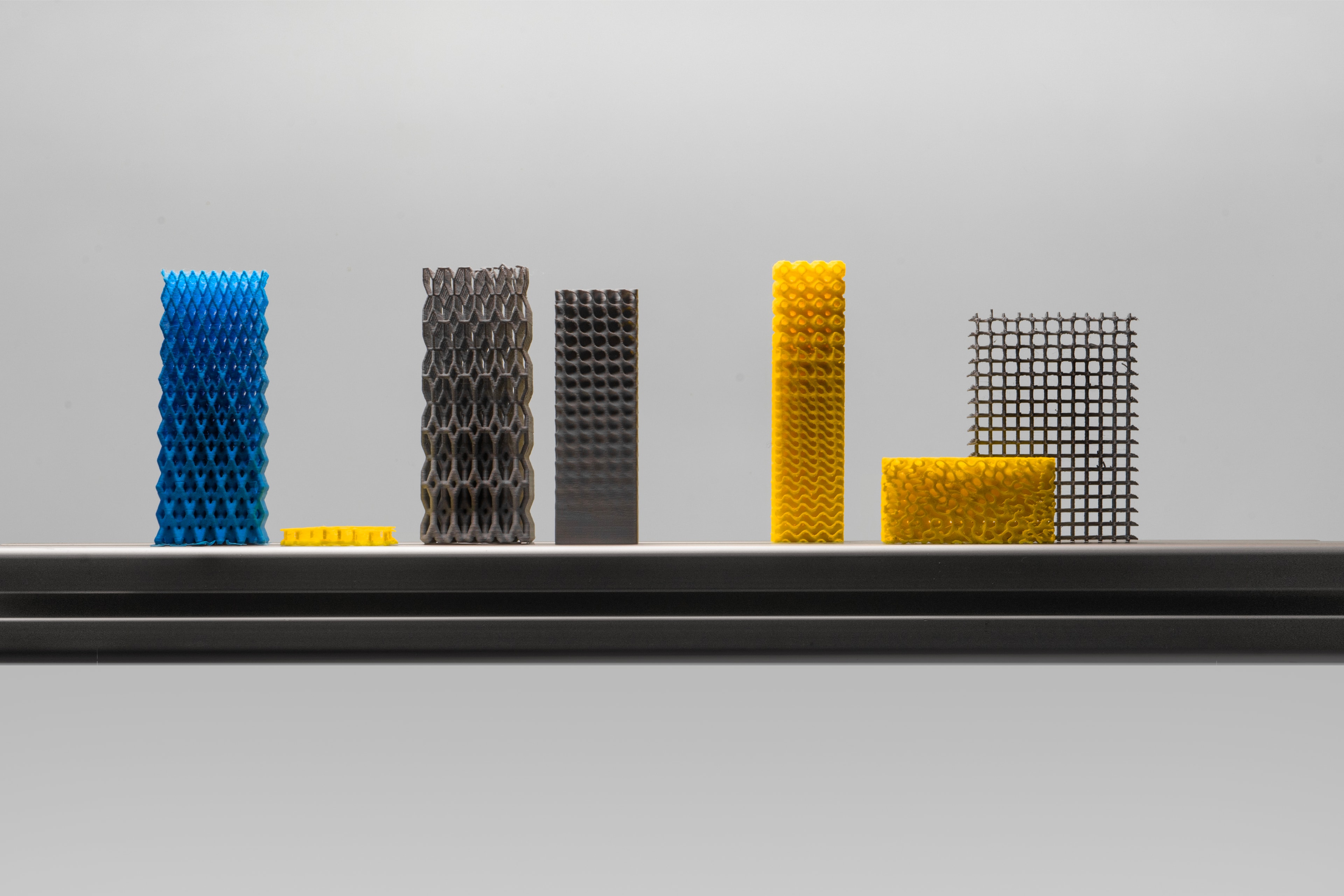
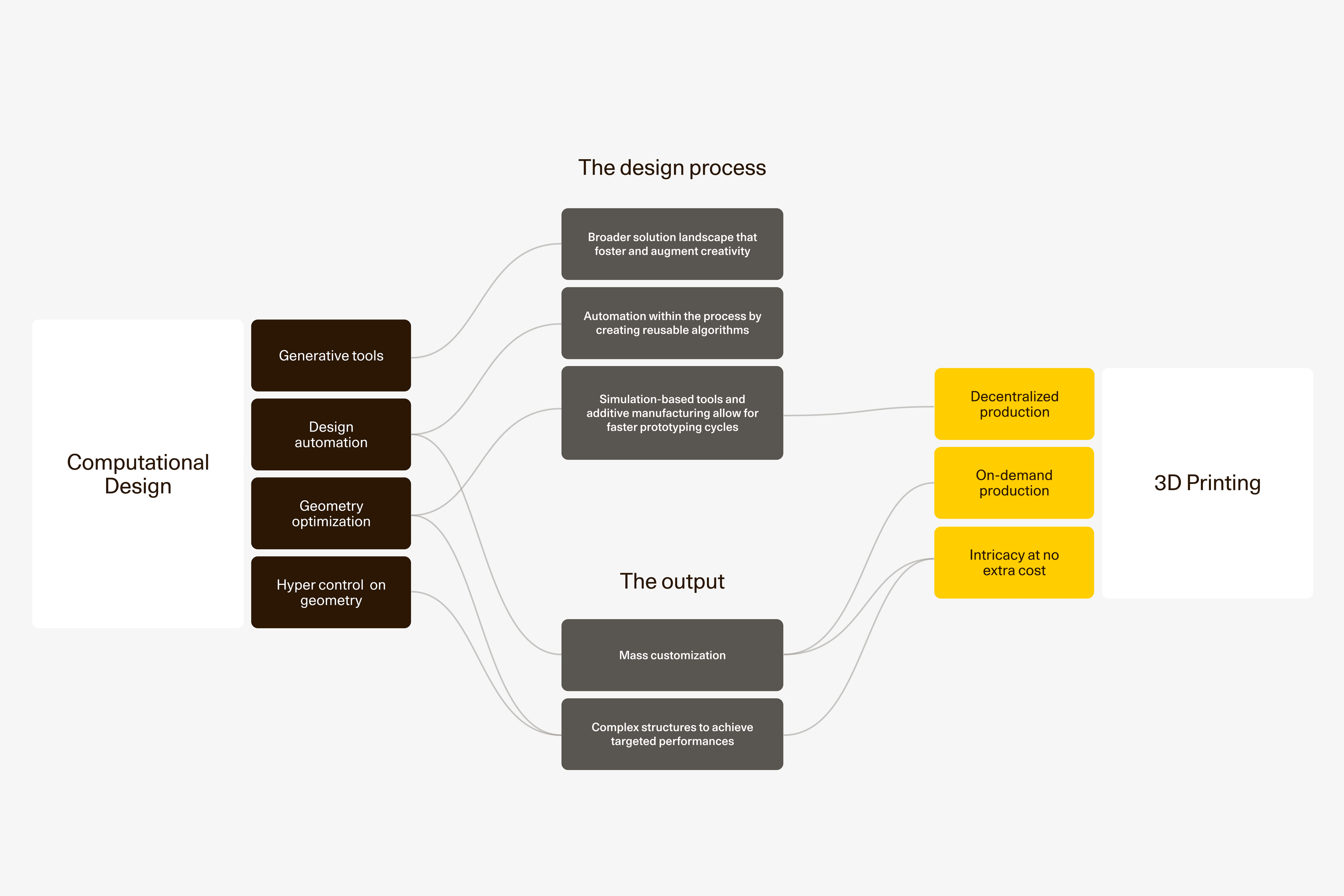
Project Team
Andrea Marsanasco, Tommaso Silluzio Research Lucas Teixeira Photography
Software
Axolotl Plug-in for lattice control Grasshopper, Rhino Implicit modelling and 3D